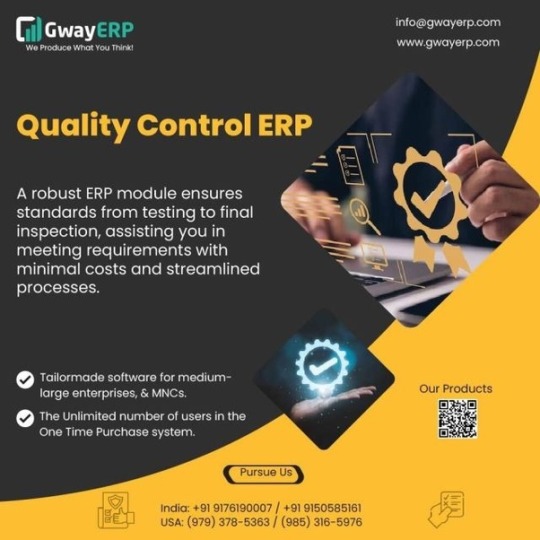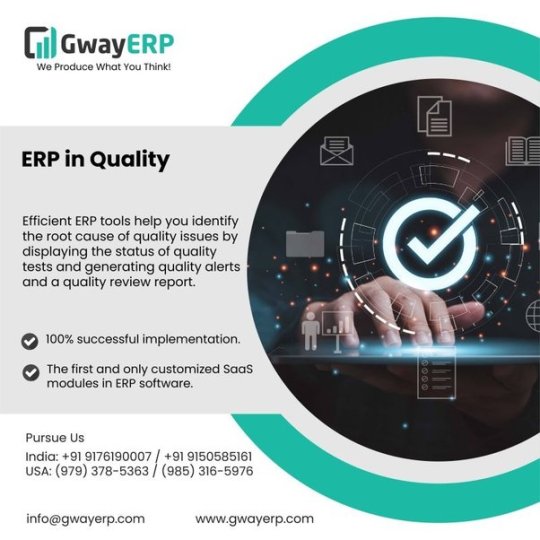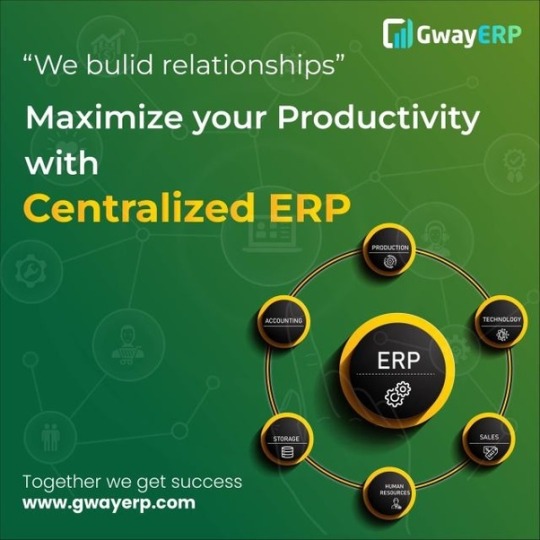#ProjectOutsourcingCompany
Explore tagged Tumblr posts
Text
Struggling to outsource your IT projects?
We got you covered!
For more info: https://gwayerp.com/contactus
[software development, erp software solutions, resource outsourcing services, IT Projects]
#softwaredevelopmentservices#bespokesoftwaredevelopment#outsourcedproductdevelopment#resourceallocation#resources#resourceaugumentation#projectoutsourcingcompany#gwayerp#virtualoffshoredevelopmentcenter#customizederp
0 notes
Text
Mastering React Native Components and UI Development: A Comprehensive Guide

Introduction:
This thorough primer to React Native, a potent tool for creating cross-platform mobile applications, is yours to peruse at your leisure. The React Native environment will be covered in this blog article, along with its benefits and step-by-step directions for building your first Custom software application in React Native.
Facebook created the open-source React Native technology for mobile applications. It enables programmers to construct mobile apps for the iOS and Android platforms using JavaScript and React. Programmers can now construct mobile applications using the same code and guiding principles as React web applications thanks to React Native, an extension of the popular JavaScript toolkit React.
React Native has completely changed how we create cross-platform mobile applications by providing a streamlined JavaScript and React development environment. Every React Native app's components and user interface (UI) are what give the app its overall appearance and functionality. In this blog post, we will discuss recommended practices for UI development and delve into the world of React Native components. Whether you're a novice or a seasoned developer, this thorough manual will arm you with the skills necessary to design gorgeous and effective user experiences with React Native.
1. Components of React Native to Understand:
It's crucial to understand the concept of components if you want to create reliable applications with React Native. First, we'll go into great detail about components, including what they are, how they work, and the many types that are available in React Native.
2. Reusable Component Development:
As React Native enables you to effectively design large user interfaces by composing smaller, self-contained parts, creating reusable components is a crucial component of the development process. In this section, we will examine how to develop reusable components in React Native.
3. Identifying Reusable Elements:
The first step towards creating reusable components is to identify UI elements or functionalities that appear frequently throughout your app. From buttons and headers to cards and lists, recognizing these repeating elements will form the basis of your reusable components.
4. Setting Up the Component File:
Once you've identified the reusable element, create a new component file with a.js extension in your React Native project. Organizing components in separate files ensures a clean and structured codebase.
5. Importing Dependencies:
In the component file, begin by importing necessary dependencies, such as React and React Native components. These dependencies will be essential for building your reusable component.
6. Building the Reusable Component:
Depending on your requirements, create either a functional or class component. For simplicity, we will focus on functional components. Design the component with flexibility in mind, allowing it to accept props for customization and dynamic behavior.
7. Utilizing Props for Customization:
One of the key features of reusable components is their ability to adapt to various scenarios. Utilize props to pass data and event handlers to your component, making it customizable and interactive. This enables you to reuse the same component with different configurations throughout your app.
8. Exporting the Component:
To use the component in other parts of your app, export it using export default. Exporting the component allows you to import and render it wherever needed, promoting code reusability.
9. How to Use the Reusable Component:
Once the reusable component has been developed, import it into your app and use it within other components. This method provides uniformity throughout your application and streamlines the ERP development process.
10. Extension and Modification of Reusable Components:
You might need to change or expand the functionality of your reusable components as your program develops. Learn how to modify current components while maintaining backward compatibility to prevent needless refactoring.
Styling in React Native:
1. A Deep Dive into CSS and Flexbox:
Learn the art of styling in React Native using CSS-like properties and Flexbox layout. We'll cover the basics of styling components, handling responsive designs, and creating visually appealing user interfaces.
2. Handling User Input with React Native Components:
From buttons and text inputs to checkboxes and dropdowns, we'll explore various React Native components that handle user input. We'll discuss best practices for designing intuitive user interfaces and handling user interactions.
3. Building Complex UIs with Composing Components:
Combining simple components to create complex UIs is a crucial skill in React Native development. We'll dive into the technique of composing components to build sophisticated user interfaces with ease.
4. Navigation and React Navigation:
Seamless navigation is essential for a great user experience. We'll introduce React Navigation, a popular library for handling navigation in React Native apps, and explore different navigators and navigation patterns.
5. Styling Best Practices for Performance:
Optimizing your app's performance is crucial for ensuring a smooth user experience. We'll discuss performance-oriented styling techniques and tips to reduce rendering time and improve your app's responsiveness.
6. Handling State and Props in UI Components:
React Native components often rely on state and props to display dynamic data. We'll cover how to handle state and props effectively to ensure your UI updates efficiently and accurately.
Advanced UI Techniques: Animations and Gestures
Take your UI to the next level with animations and gestures. We'll delve into React Native's animation capabilities and explore touch gestures for creating interactive and engaging user interfaces.
1. Understanding Animations in React Native:
The user experience is greatly improved by animations, which give the software vitality and interactivity. We will explore the built-in animation capabilities provided by React Native, including the Animated API and Layout Animation, and understand the basics of creating smooth and fluid animations.
2. Creating Animated Components:
Learn how to animate various UI components, such as buttons, cards, and modals. We'll cover techniques like fade-in, slide-in, and scaling animations and how to orchestrate multiple animations together to build complex and engaging UI transitions.
3. React Native Gesture Responder System:
React Native provides a powerful gesture responder system that allows developers to handle touch gestures with ease. We'll delve into handling touch events, recognizing gestures like taps, swipes, and pinches, and implementing custom interactions.
4. Implementing Drag-and-Drop Functionality:
Drag-and-drop interactions are prevalent in modern apps, offering intuitive ways to manage content. We'll explore how to create drag-and-drop functionality using Pan Responder, enabling users to move and rearrange elements effortlessly.
5. Animated Transitions and Navigation:
Learn how to use animations to enhance navigation between screens. We'll explore custom transitions for stack navigators, tab navigators, and drawer navigators, providing users with visually appealing and seamless transitions.
6. Interpolations and Easing Functions:
Understand the concept of interpolations and easing functions to control the timing and behavior of animations. We'll cover how to use easing functions like linear, bounce, and elastic for smoother and more natural animations.
7. Advanced Animation Libraries in React Native:
Discover popular animation libraries, such as Lottie and React Native Reanimated, that offer extended capabilities for creating complex animations. We'll explore how these libraries can take your UI to the next level with their unique features.
8. Gesture-Based User Interaction:
Implement gesture-based interactions that respond to users' touch and motion. We'll cover use cases like swipe-to-delete, pinch-to-zoom, and swipeable cards, making your app feel intuitive and interactive.
9. Performance Optimization for Animations:
Optimize your animations for better performance and reduced battery consumption. We'll discuss techniques to minimize unnecessary re-renders, use component updates, and leverage the Animated API's features effectively.
Creating Custom Components and Libraries:
Learn how to create your own custom components and explore the process of creating and publishing reusable component libraries for the React Native community.
1. The Power of Custom Components:
Understand the importance of custom components in React Native development. In this section, we'll go over the benefits of developing custom components, such as how they ease the development process by streamlining the code and making it easier to manage, stay consistent with, and update.
2. Designing a Custom Component:
Learn the key considerations when designing custom components. From defining the component's purpose and functionalities to planning its props and state, we'll guide you through the essential steps to creating well-structured and versatile components.
3. Implementing Custom Components:
Dive into the implementation of custom components using both functional and class-based approaches. We'll explore the best practices for composing components, leveraging styles, and handling dynamic data to ensure your components are both efficient and reusable.
4. Prop Types and Default Props:
Explore React's prop types and default props system to ensure that your custom components maintain type safety and provide meaningful default values. We'll cover how to validate incoming props and set defaults for smoother component usage.
5. Building Custom Libraries:
Take your reusability to the next level by building custom libraries. We'll demonstrate how to extract and package your custom components into a reusable library that can be shared across multiple projects or even published to the npm registry.
6. Documenting Custom Components and Libraries:
Learn the importance of proper documentation in custom component development. We'll cover techniques for documenting your components' API, usage examples, and any specific considerations for developers who may use your library.
7. Versioning and Maintaining Custom Libraries:
Discover versioning strategies to manage updates and ensure backward compatibility in your custom libraries. We'll explore how to handle bug fixes, feature enhancements, and deprecations in a way that ensures smooth upgrades for consumers.
8. Participating in Open-Source Component Library Projects:
Investigate the world of open-source libraries and discover how you can help support ongoing initiatives. You will be better able to appreciate the advantages of contributing to the open-source community if you are familiar with GitHub, pull requests, and code reviews.
9. Testing Custom Components and Libraries:
Discuss the importance of testing in custom component development. We'll cover unit testing, integration testing, and snapshot testing to maintain the quality and reliability of your custom components and libraries.
Conclusion:
React Native components and UI development form the backbone of any mobile application. By mastering the art of creating reusable components, designing intuitive user interfaces, and leveraging advanced UI techniques, you can build powerful and visually appealing apps with ease. No matter what degree of programming experience you have, this session will equip you with the knowledge and abilities you need to advance your React Native app development. So, let's dive in and create stunning mobile experiences with React Native!
#softwaredevelopmentservices#resourceaugumentation#virtualoffshoredevelopmentcenter#outsourcedproductdevelopment#bespokesoftwaredevelopment#projectoutsourcingcompany#customizederp#resourceallocation#resources#gwayerp#uidesign#ui ux design#ux#design#dashboard#ui#custom software development#reactnative#reactjs#automation
1 note
·
View note
Text
Two Approaches of Software Testing
Introduction:
A product or service must adhere to or exceed established quality criteria for that to be considered to have received quality assurance (QA). It is a collection of procedures used to stop errors, find problems, and raise the level of quality overall during the development or production process.
The primary goal of quality assurance is to provide consumers with confidence that the product or service being produced will meet their requirements and exceed their expectations. Organizations can reduce risks, increase productivity, and improve client satisfaction by implementing QA processes

Here are some essential elements and operations constantly associated with quality assurance:
• Planning involves determining quality goals, developing quality strategies, and establishing metrics to assess the success of the quality system.
• Establishing procedures and guidelines that specify the required level of quality and documenting the processes to ensure consistency and adherence to policies and practises.
• Conducting regularly scheduled audits to assess compliance with established standards and processes and discover improvement opportunities.
• Testing and Inspection Performed various testing and inspection procedures to spot flaws, confirm functionality, and ensure standards are being followed.
• Implementing procedures to locate and resolve problems, encourage learning, and continuously enhance the standard of goods or services.
• Training and Competence providing programmes to improve the abilities and knowledge of individuals engaged in quality-related responsibilities.
• Customer Feedback obtaining and evaluating feedback from customers to better understand their requirements, expectations, and levels of satisfaction, then implementing this knowledge into efforts to enhance quality.
• Risk management is the procedure of identifying potential hazards and taking measures to reduce or eradicate their adverse impacts on product quality.
It's essential to keep conscious of the connection between quality assurance and quality control (QC). QC is concerned with identifying and fixing errors during the production or development phase, whereas QA concentrates on preventing errors and ensuring quality throughout the process. An efficient quality management system must include both QA and QC. Overall, quality assurance is essential for guaranteeing that goods and services uphold the intended standards of quality, which improves client happiness, lowers costs, and boosts market competition.
Software testing involves evaluating an application or system to ensure it conforms to requirements and operates as intended. It is a crucial stage in the development of software. The main objective of testing is to recognize vulnerabilities or breakdowns in the programme and enhance its performance, dependability, and quality.
Here are some key aspects of software testing:
1. Types of Testing: Throughout the software development lifecycle, many techniques for testing are used to evaluate various software components. Typical test formats include:
• Unit testing verifies the functionality of the software by exposing individual units or components to the test.
• Testing the interactions between various modules or components to make sure they function properly together is known as integration testing.
• System testing: Testing a system or application in its entirety to determine whether or not it complies with predetermined requirements. Testing the software to see if it satisfies user needs and is prepared for deployment.
• Performance testing: Analyzing the way effectively and responsively the software performs under various load circumstances.
• Software resistance to unauthorized access, weaknesses, and possible threats are evaluated through security testing.
• Testing the software's user interface and overall user experience is known as usability testing.
• Regression testing involves testing functionality that has already been tested to make sure that enhancements or changes haven't created new issues that need to be addressed.
2. Test planning involves developing test cases that span various software features, setting test objectives, and identifying test scenarios.
3. Test execution requires moving the test cases and recording the outcomes to find errors. The tests can be carried out by testers using either manual testing methods or automated testing software.
4. Identifying, reporting, tracking, and resolving errors discovered during testing is known as defect management. This ensures that problems are acknowledged and adequately documented.
5. Test documentation is the process of producing test objects including test plans, test cases, and test reports to record the testing process and serve as a guide for upcoming tests or maintenance.
6. Test automation is the process of automating the execution of tests using specialized software tools, which can increase test efficiency, repeatability, and coverage.
7. Continuous testing allows for quicker response and ongoing improvement by integrating testing operations throughout the whole software development lifecycle.
8. Using specialized software or tools to monitor and manage reported defects throughout their lifecycle until they are fixed is known as a bug tracking system.
Effective software testing facilitates early issue detection and resolution, reducing the time and costs associated with correcting issues at a later stage or after deployment. Additionally, it assists in the development of dependable, excellent software that lives up to customer expectations.

Quality assurance (QA) is of the utmost importance for many different kinds of reasons:
Customer satisfaction is ensured through QA, which makes sure that goods and services continually satisfy or exceed client expectations. Organisations that prioritise quality are better equipped to provide dependable, useful, and error-free goods and services, which boosts client happiness and loyalty.
Brand Reputation: A strong brand reputation is created by consistently providing high-quality goods or services. Increased client traffic, improved market competitiveness, and a higher possibility of repeat business and favourable recommendations are all benefits of having a solid reputation.
Cost reduction: Early in the development or production phase, QA assists in identifying and remediating flaws, mistakes, and inefficiencies. Early issue detection allows businesses to significantly save costs by preventing expensive rework, customer complaints, product recalls, and service failures.
Process Improvement: A key component of quality assurance is assessing and analyzing processes to find opportunities for development. As a result, processes are streamlined, resources are maximized, waste gets cut down, and overall efficiency is raised.
Compliance and Regulations: There are demanding rules and requirements for quality in many sectors. QA ensures that these regulations are adhered to, ensuring that products and services meet both statutory requirements and industry standards.
Risk management: QA assists in discovering and controlling risks related to the quality of a product or service. Organizations can reduce risks, avoid potential failures, and maintain a secure environment for their products or services by putting proactive safeguards and controls in place.
Continuous Improvement: A culture of continuous improvement is encouraged by quality assurance inside an organization. Organizations are able to identify trends, investigate problems, and take appropriate action to stop them from happening again through the processes of communication, data analysis, and routine audits.
Confidence among Stakeholders: QA provides stakeholders—including partners, employees, and investors—confidence in the company's capacity to offer high-quality goods or services. This trust strengthens partnerships, draws in funding, and improves connections.
Implementing QA procedures shows a commitment to quality and excellence, which has a good effect on employee morale and engagement. When an organization prioritizes quality, employees feel empowered and motivated, which boosts productivity and work happiness.
The maintenance and enhancement of product and service quality, customer satisfaction, and business success depend on quality assurance.
It is an investment that pays off over time by the preservation of costs, which decreases risks, along with establishing a reputation for quality in the marketplace.
QA is relevant to a wide number of different professions and sectors in addition to software development, including those that create goods and services, offer healthcare, construct infrastructure, and engage in construction. Quality assurance's ultimate objective is to ensure that goods and services continually satisfy customers, adhere to rules and laws, and improve brand reputation.
#outsourcedproductdevelopment#softwaredevelopmentservices#resourceaugumentation#bespokesoftwaredevelopment#resourceallocation#gwayerp#customizederp#virtualoffshoredevelopmentcenter#projectoutsourcingcompany#resources#qualityassurance#qualitycontrol#software testing#custom software development
0 notes
Text
Mapping Your Business Into Success!
An industry trends analysis of ERPs in 2020 reveals that 93% of the organizations that opted for an ERP found it to be successful. We have already seen statistical data pointing towards a surge in the demand for ERP solutions, even amongst small and medium-sized industries. So does it indicate that the fears about ERP failures that loomed large a couple of years ago have disappeared? Or is it that industries are able to source the right kind of options for them?
To understand that, we need to first look at what we define as the success of the ERP itself. Is success defined by the project going live on time? Or that it was well within budget? Or if it enhanced profits and brought about a great turnover? ERP is a system, and analyzing its success needs to be carefully crafted. It needs to be linked directly to the objectives of why a business opted to adopt custom ERP software. If the objective of opting for an ERP was linked to overall cost effectiveness, that should be the pointer to gauge the success of the system. If the business house looked at plugging loopholes in supply chain management, and if that was achieved, then that would be an indicator of success. So it is not always about the profit and loss of that particular year.

So when you analyze your success, it is important to keep the key performance indicators (KPI) in mind so that you arrive at the best possible result for your company. With all these guiding points and expected outcomes from your decision to shift to an ERP, you will be able to map the success of your business more perfectly. It is also important for companies to understand they are in competition with themselves to see if they do better than in previous years.
At GWAY, we understand the needs of businesses with a style of their own. It is important for any ERP maker to understand the ethos of the business and also reflect the same in the application that is developed. GWAY spends quality time analyzing the needs of its customers because that is the first step to helping link the need to the outcome. This also helps to understand the KPI that the business house can use to map success in its own terms.

Recently, GwayERP mapped the entire business of a coal distributor on a path to success, pinning each point from the movement of raw material to the final point using the Agile methodology. With Agile, the whole process was broken down into smaller segments for each step, from the procurement of the raw material to the final product. The team at GwayERP worked closely with its clients to understand the nuances of the business and developed tailor-made software that brought into action the steps that the client visualized. With such meticulous and step-by-step planning, the success of the ERP was ensured with lifetime support.
Mapping and making ERP a success lie in the approach towards the system itself, and GwayERP has the best solutions to offer for your business that are unique and distinct.
#outsourcedproductdevelopment#softwaredevelopmentservices#projectoutsourcingcompany#customizederp#virtualoffshoredevelopmentcenter#resources#resourceallocation#bespokesoftwaredevelopment#resourceaugumentation#gwayerp#custom erp software#erp software development company
0 notes